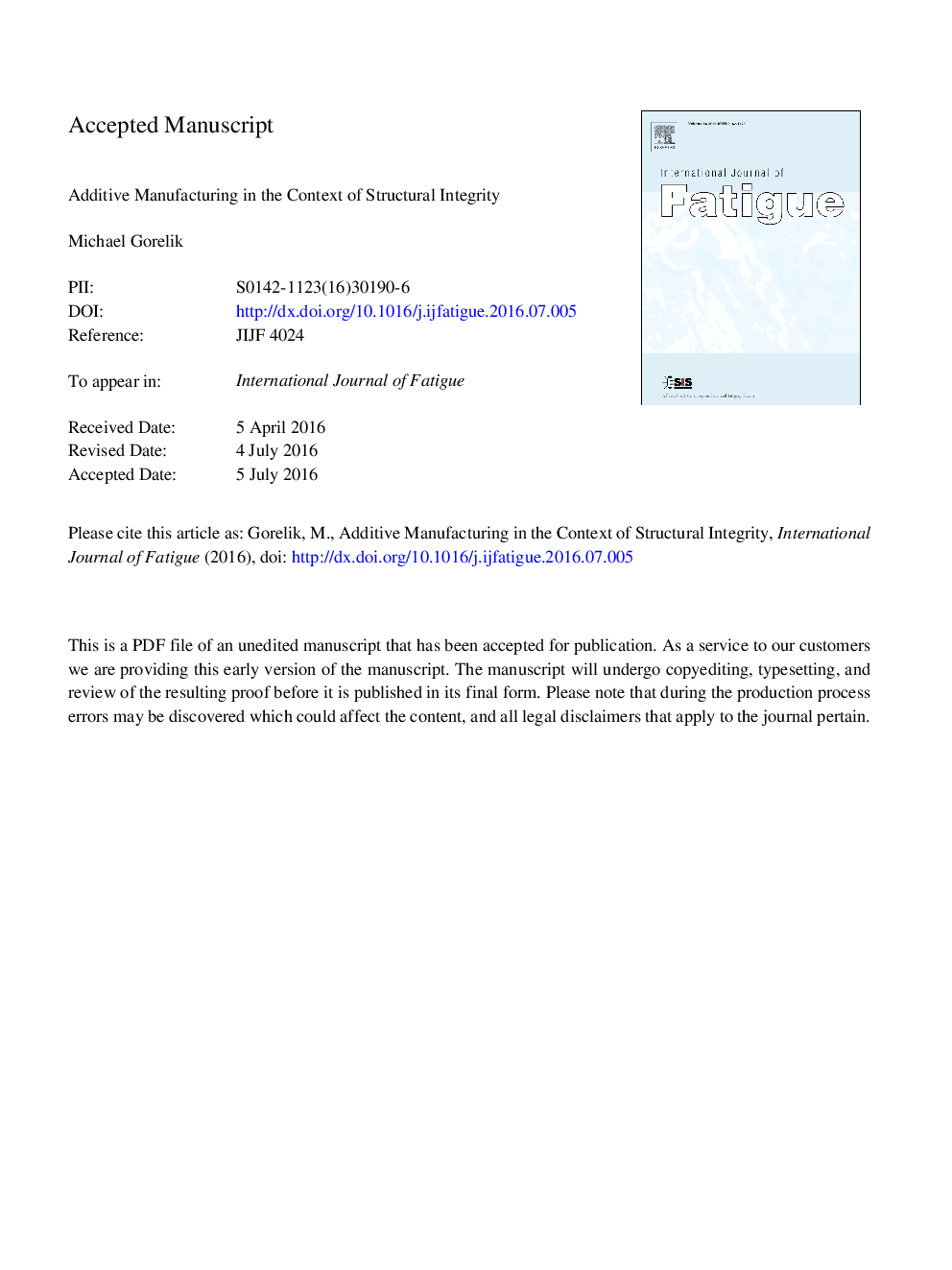| Article ID | Journal | Published Year | Pages | File Type |
|---|---|---|---|---|
| 5015377 | International Journal of Fatigue | 2017 | 17 Pages |
Abstract
Additive Manufacturing (AM) applications are poised to rapidly expand in aviation, driven by a significant number of business and technical benefits that have been extensively discussed in the media. Due to its inherent flexibility, AM is being considered for a variety of application domains that span new parts, repairs and aftermarket. At the same time, a number of implementation challenges have been identified by multiple researchers and organizations, including the complexity of manufacturing process controls, the questionable applicability of conventional NDI (non-destructive inspection) methods and the lack of industry standards and design allowables, etc. These technical challenges are further exacerbated by the current lack of field experience with AM components as well as limited full-scale production experience, at least in commercial aviation applications. Analysis of historical lessons learned for introduction of new material technologies suggests that appropriate application of fracture mechanics-based damage tolerance (DT) principles can offer an effective risk mitigation mechanism against the inherent material flaws, as well as manufacturing and service-induced defects. This paper outlines an assessment framework for AM parts based on the combination of zoning considerations and probabilistic fracture mechanics. The proposed methodology is discussed in the context of a “system-level” approach to structural integrity of AM components, and is compared and contrasted with established risk mitigation frameworks for other material systems, such as the use of casting factors for cast aircraft components, or probabilistic life prediction systems for powder metallurgy (PM) turbine engine components. Potential implications for regulatory guidance and certification, including linkage between the DT criteria and levels of parts criticality are briefly discussed as well.
Related Topics
Physical Sciences and Engineering
Engineering
Mechanical Engineering
Authors
Michael Gorelik,
